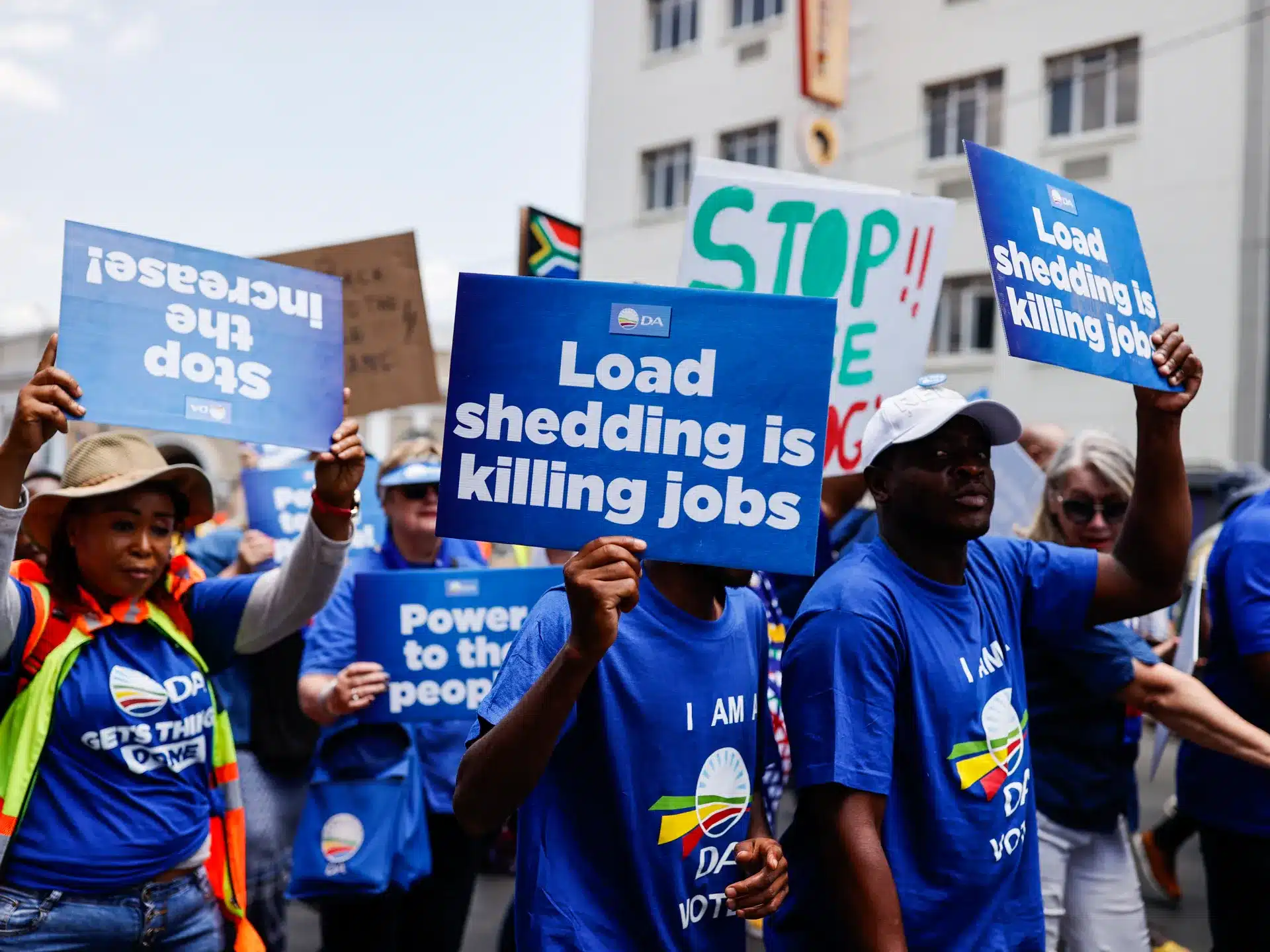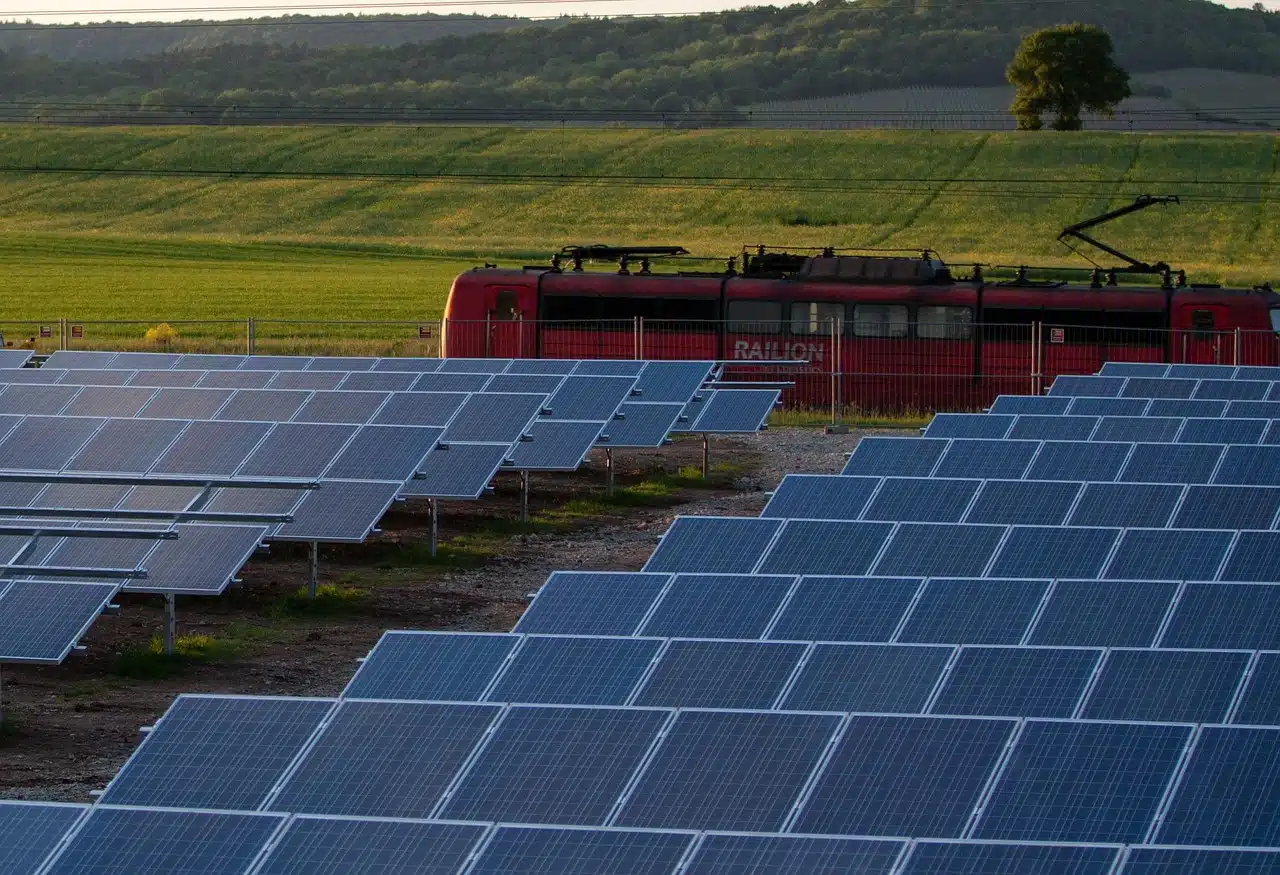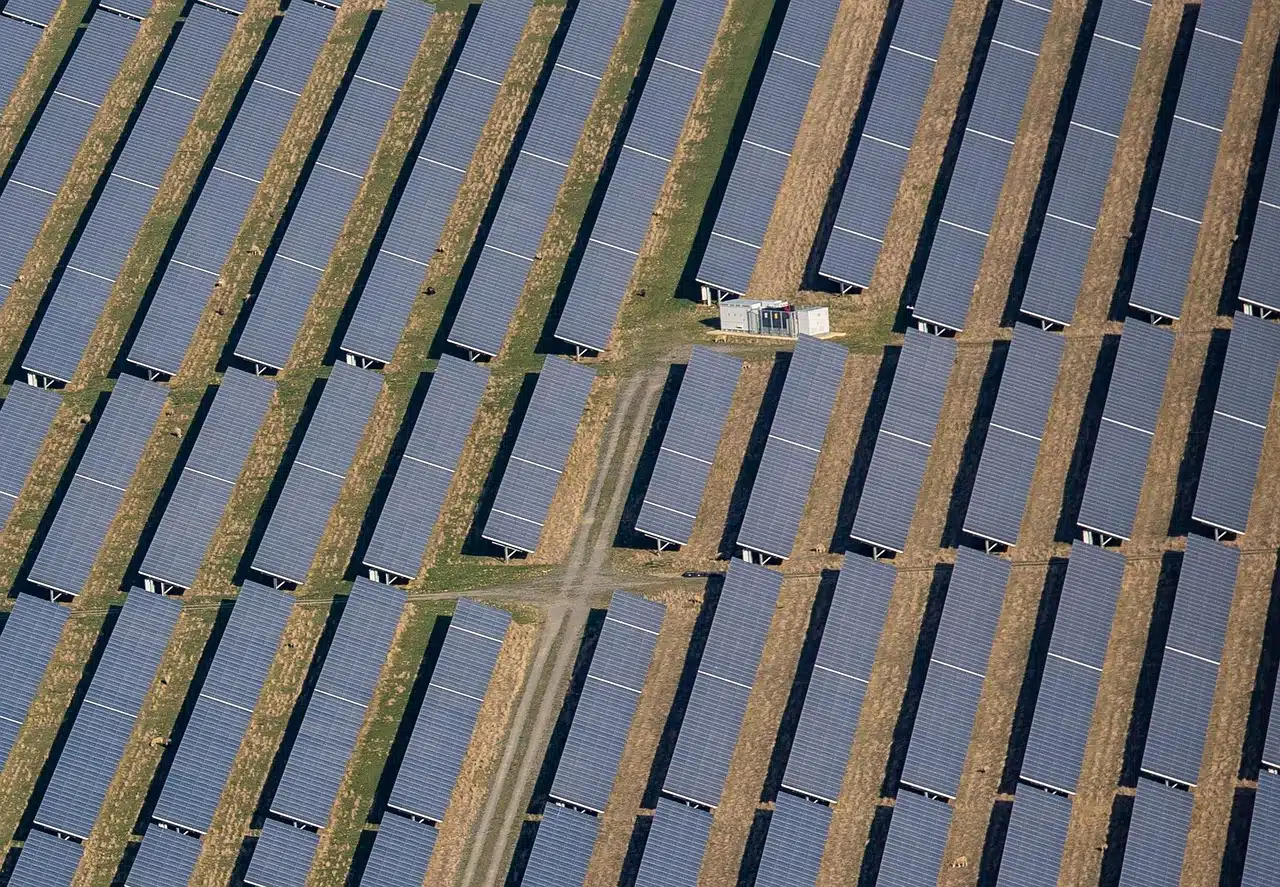It has become a recurring scene across South Africa’s urban centres and townships: the lights flicker once or twice and then go out altogether.
For more than 15 years, since the first wave of load shedding in 2007, rolling blackouts have become woven into daily life.
The National Development Plan 2030 describes them as a “national crisis” that undermines economic growth and social well-being.
In 2023 alone, not a single day was free from load shedding until the government declared a reprieve late in the year, affirming how deeply embedded power instability had become in the South African psyche.
At the heart of this crisis is Eskom, the state-owned utility responsible for over 90 percent of the country’s electricity. Built on a legacy of heavy reliance on coal, much of its infrastructure dates from the 1960s to the 1980s and operates well beyond its intended lifespan.
Mismanagement, corruption and strategic inertia have crippled its ability to meet demand, driving up debt to R419 billion ( $30.8 billion) by 2019.
Against this backdrop, South Africa grapples with questions that go beyond technical fixes:
How did a world-class electricity provider decline into dysfunction? Whose interests are served when power flickers off? And, in a country marked by deep inequality, what energy justice still awaits the most vulnerable?
The Collapse of confidence: From powerhouse to pariah
South Africa once boasted one of the continent’s most reliable power systems.
By 2007, however, a combination of ageing coal-fired plants, inadequate maintenance and faltering expansion began to reveal structural cracks.
Projects like Medupi and Kusile, launched to add capacity, encountered massive delays and cost overruns, even as older plants continued to operate past their lifespan.
Eskom’s decline was not purely technical. The Zondo Commission later exposed deep pockets of corruption and state capture, highlighting contracts awarded to Gupta-linked firms, like Trillian and McKinsey, worth over R9.4 billion ( $680 million), skewed to enrich connected elites.
Infrastructure entirely capable of generating power was neglected. In some instances, sabotage—deliberately severed electricity pylon steel supports—further deepened outages.
By early 2022, South Africa reached a grim milestone: stage 6 load shedding, equating to more than half the national grid offline, at times lasting days on end.
The economic ramifications were stark: the DA estimated load shedding cost the economy R300 billion ($16 billion) in 2022, while economists put broader GDP losses at 1–1.3 percent annually since 2007.
Businesses collapsed, healthcare services faltered—80% of public facilities experienced outages —and homes grew dim with rising crime and frustration.
Load shedding has become so habitual that it hardly prompts alarm anymore.
South Africans track stages (1–8), plan around schedules, and pay extra for in‑house backup systems. Smart geyser controllers and petrol‑station generators attest to the embedded adaptation.
What was once temporary has transformed into ritual—a symbol of state failure but also of civic resilience.
Yet this normalisation is more than an inconvenience.
It shifts responsibility away from policy failure onto citizens, as households adjust routines, budgets and productivity.
Where one household endures a few hours in darkness, small businesses may lose inventory, and consumers dig into savings to acquire backup systems. This is not resilience—it is resignation.
Inequality in energy access
The burden of load shedding falls unevenly.
Wealthier households can afford uninterrupted supply via solar systems and UPS units, while informal settlements and rural townships are plunged further into darkness, with less access to cooking, heating, education and connectivity.
Geographically, communities already suffering from apartheid-era spatial marginalisation—like Soweto, Mitchells Plain, and KwaMashu—face more intense disruption, eroding opportunities for home-based enterprises and increasing exposure to violence under dark conditions.
In Durban, Cape Town and Johannesburg, citizens have resorted to candlelit study sessions and generators to complete schoolwork.
Energy justice extends beyond restored supply—it encompasses fair resource allocation and a state structured to protect the vulnerable from systemic failure.
South Africa’s current trajectory appears to perpetuate a two-tiered energy system: one for those who can pay and another for those left to survive intermittent supply.
Political fault lines: Eskom as battlefield
Efforts to reform Eskom—most notably its 2019 unbundling initiative—met political resistance from entrenched interests.
Despite the separation of transmission into a new entity (NTCSA), the generation and distribution divisions remained under a unified structure susceptible to rent-seeking and corruption.
Municipal debt, reaching a record R95 billion ($5.2 billion) in 2024, compounded Eskom’s woes, causing supply cutoffs to municipalities that couldn’t pay, often poorer regions. Johannesburg alone owes nearly R5 billion.
Tensions over write-offs—where municipal governments advocate forgiveness while Eskom resists—illustrate the ethical fault lines between fiscal stability and electoral politics.
The ANC, fractious within itself, struggles to align factionalism with systemic reform.
CEO Dan Marokane’s dismissal of corrupt managers and intensified maintenance yielded 200 consecutive days without load shedding in 2024, improving Eskom’s Energy Availability Factor by 7.7%.
Yet he warns that the reprieve may be temporary, pending a sustained structural overhaul.
The opposition calls for a more liberalised grid.
The DA has argued that Eskom’s monopoly has strangled reliability, advocating an open market, private-sector participation and a shift to renewables. Electrification, fiscal accountability, and energy justice have become core battlegrounds of national debate.
Promise of a new energy order
Reforms have begun to take hold in the midst of the crisis.
The Renewable Energy Independent Power Producer Procurement Programme (REIPPPP) introduced private-sector investment into the power mix, delivering 6.2 GW through 123 projects—about 5 percent of total capacity.
As of Bid Window 6, government targets include 5,200 MW of renewables.
Yet the transition has not been friction-less. Allegations at REIPPPP include interference from policymakers who delayed commitments.
André de Ruyter, former Eskom CEO, testified that earlier leadership halted IPP contracts, exacerbating load shedding—he estimated that 96 percent of such blackouts could have been avoided had delayed REIPPPP projects progressed.
Renewable advocates highlight the justice opportunity. Projects in the coal belt—such as Komati, converted to solar and battery storage and supported by a $497 million World Bank-backed Just Energy Transition partnership—are meant to cushion job losses and transform regional economies.
Yet locals voice frustration: the promise of “just transition” rings hollow without visible employment or improved services.
This dynamic mirrors broader challenges: transitioning away from coal without harming affected communities.
Energy justice as a guiding principle
True energy justice demands more than occasional policy shifts. It requires treaties with citizens enshrined in transparent governance, equitable pricing, and inclusive infrastructure.
South Africa must address not only electricity generation, but also the gaps in access and affordability that lie along economic and spatial lines. Subsidy structures should target the least able to pay.
Municipal governance should be held accountable not just for billing, but for usable service delivery. Eskom’s reform must ensure distribution that uplifts rather than subsidises inequality.
In parallel, renewables and decentralised power systems offer opportunities to democratise energy.
Distributed solar, minigrids, and community-owned projects could shift some control back to local actors. Capacity-building programmes for informal settlements to manage microgeneration can build resilience and redistribute both kilowatt and capital ownership.
Compensation schemes—like those at Komati—should go beyond job creation to support community health, infrastructure, and enterprise.
Otherwise, they risk becoming compensation without empowerment.
Prospects and pitfalls: towards a new power era
The 200-day reprieve from load shedding in 2024 suggests that reform, underpinned by decisive leadership and infrastructure upkeep, can deliver results.
Yet the systemic debt, municipal arrears, and corrupted supply chains mean the underlying threat remains.
Looking ahead, the grid must evolve.
Consumers should be permitted, under regulated frameworks, to adopt private generation and connect to the grid. Municipal financial practices must align with national goals.
Eskom’s unbundling must be completed. Renewables, especially solar and wind, should continue scaling while coal plants are safely retired under just transition principles.
Crucially, energy justice must guide this transformation.
A future where the lights remain on should be one where dignity is restored, inequality narrowed, and communities empowered, not merely rescued by cables and kilowatts.








